Colored Pencil Curious
Thanks for your emails on the last post (read that post about watercolor and colored pencils here). I’m glad the links to colored pencil reviews was helpful, and I hope you find a set to try them soon.
Colored pencils expand options for adjusting color, values and overall finish on both my watercolors and printmaking. I use them all the time on other media for touch-ups, enhancements, corrections and of course, a pop of saturated color!
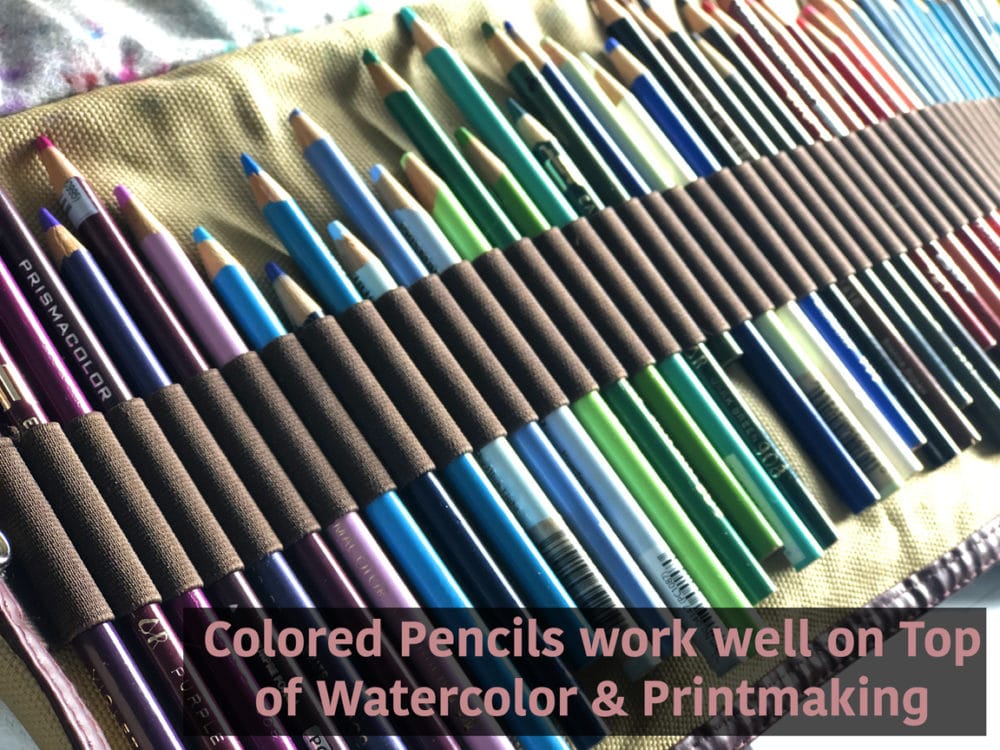
What’s the Difference Between Colored Pencil and Watercolor Pencils?
The most frequent question you emailed in response to my last post was about the difference between colored pencils and watercolor pencils. While they look identical, they are two very different art supplies.
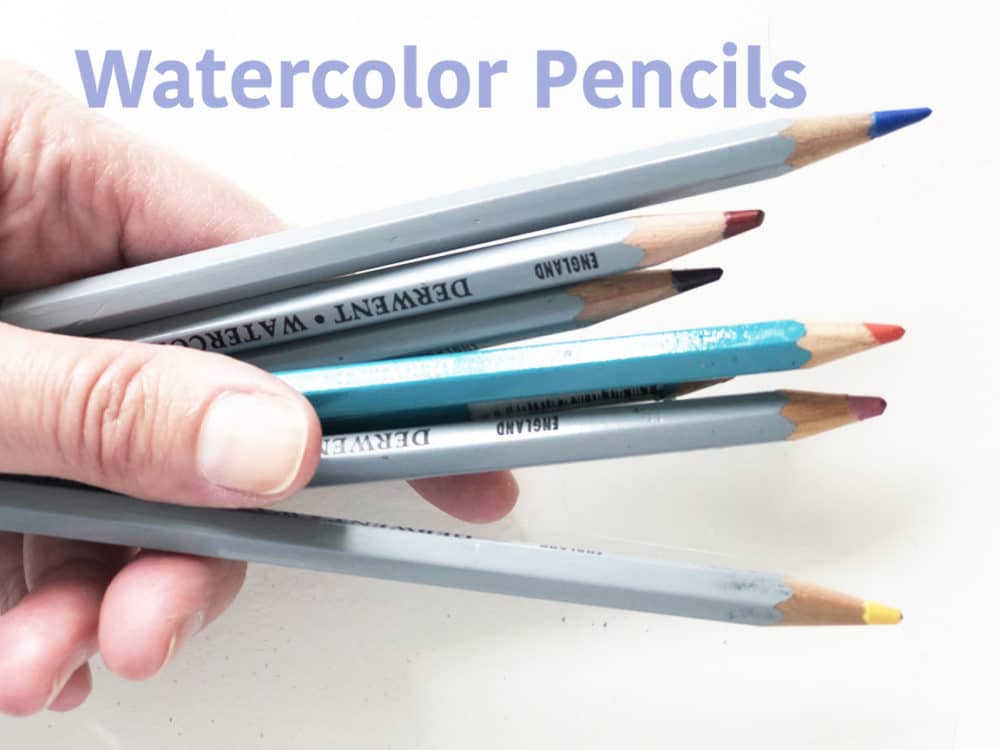
Water, Oil and Wax
Unlike colored pencils, watercolor pencils are water-soluble. The leads in watercolor pencils are made with the same powdered pigments found in tubes of watercolor and dry watercolor pans.
In watercolor pencils, the pigments in the leads are compressed with proprietary binders that stay firm enough to resist breaking (to a certain extent), and soft enough to transfer color when the pencil tip is dragged across a paper surface, just like a traditional pencil.
Watercolor pencil applied to paper in a drawing will activate and become fluid when it comes in contact with water, just like your dry pans of watercolor on your palette. (Be sure to use paper designed for wet media.) If you draw a circle and color it in with watercolor pencils, and then apply a clean, wet brush to your drawing, the pencil lines dissolve into wet watercolor pigments, and move with the brush.
You can watch Teoh Yi Chie’s demo with three colors of Cretacolor Watercolor pencils here. (Watch his Derwent Inktense comparison near the end – not all watercolor pencils are created equal.) 🤔
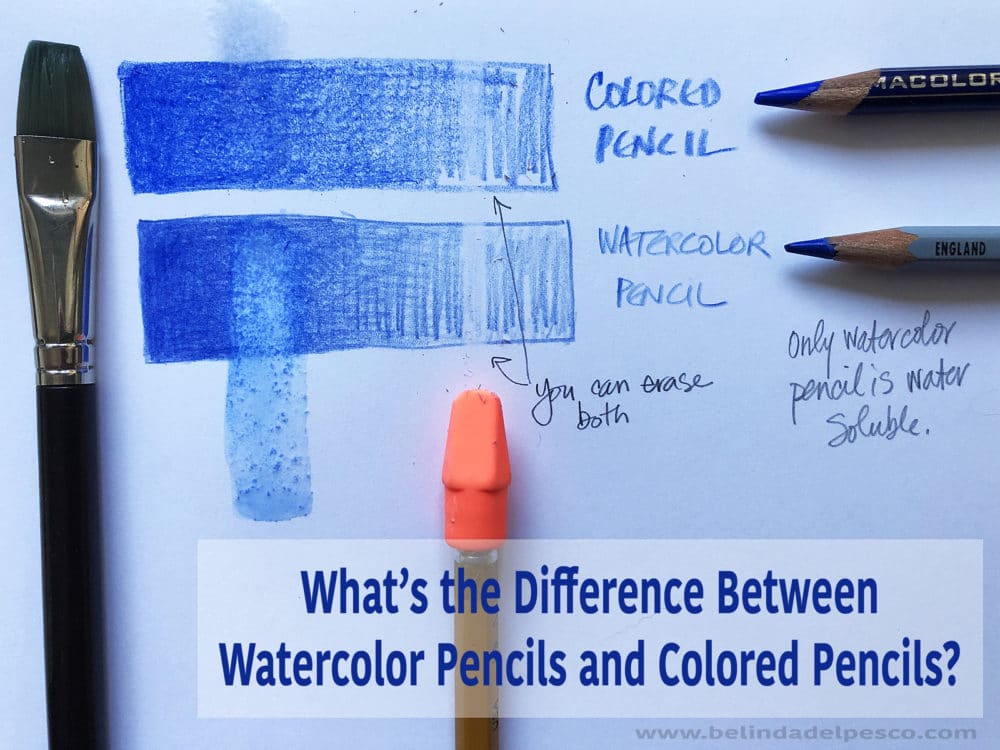
Colored Pencil vs Watercolor Pencil
In the image above, Prismacolor colored pencil is swatched on the top, and Derwent Watercolor Pencil is swatched underneath it. You can see on the right side of the swatches, I can erase both pigments. On the left side of the swatches, a clean, wet watercolor brush was dragged through both.
The only thing that got wet on the upper, colored pencil swatch was the paper around the swatch. The wax base in the colored pencils shielded the paper from the water in the brush. In the lower swatch of watercolor pencil, the pigments immediately dissolved and followed the brush in a trail of blue pigment.
Note: Don’t confuse watercolor pencil with water-soluble graphite. I know; so many closely related terms! But they are different art supplies. 🎨 Let me know if you need more information on water-soluble graphite. It’s great fun!
Can Colored Pencils be Blended?
Colored pencil pigments are bound with either wax or an oil base (depending on the brand). They are not water-soluble. If you swab a wet brush over art made with colored pencils, the pigments will not dissolve, or liquify. The water will bead on top of the pigments.
Blending colored pencil can be done with this simple but effective layering method. You can also blend more quickly (with some practice) using liquid solvents to break down the wax or oil binder. Or, try use blending pencils made specifically for smearing and smoothing colored pencil pigments. Blending markers work well too.
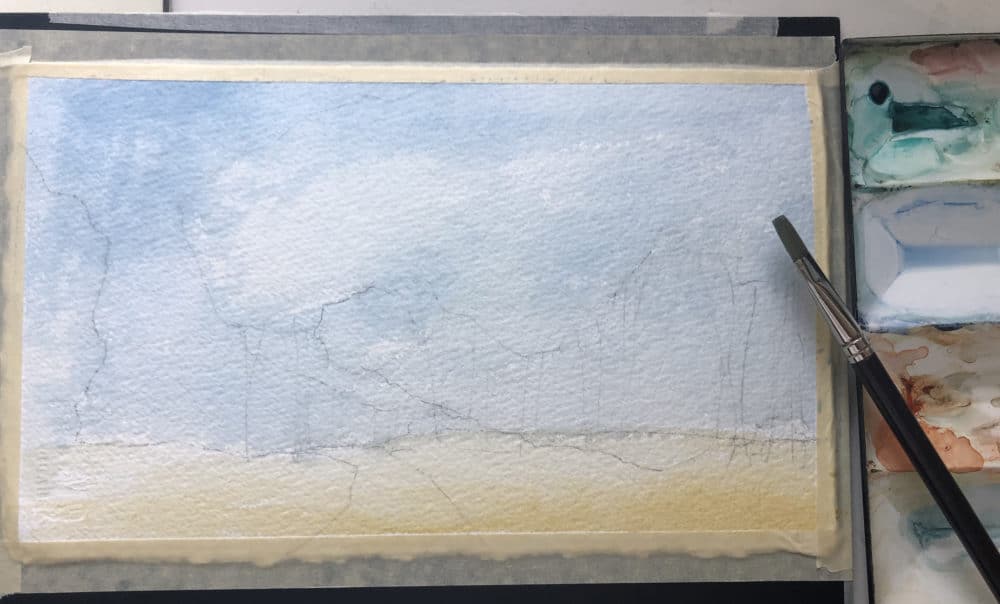
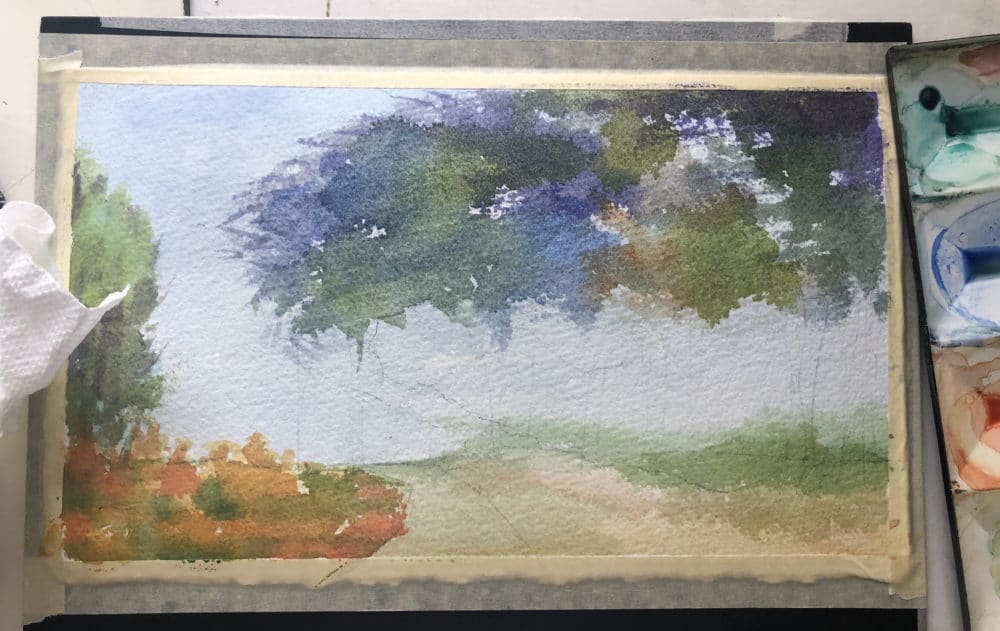
Watercolors and Colored Pencil – Where to Start?
If you’re interested in colored pencil, but you need some guidance to understand the basics, an online course on Drawing with Graphite and Colored Pencils by Mary Jane Begin might be an excellent gateway. Watch the free preview video at the top of the course page to get a feeling for her style and the contents of the course.
If you’re not sure where to start with watercolor, this online beginner’s course with Mary Jane covers plenty of basics, including details about gouache, to get your watercolor painting experiments underway. Watch her preview video about the course.
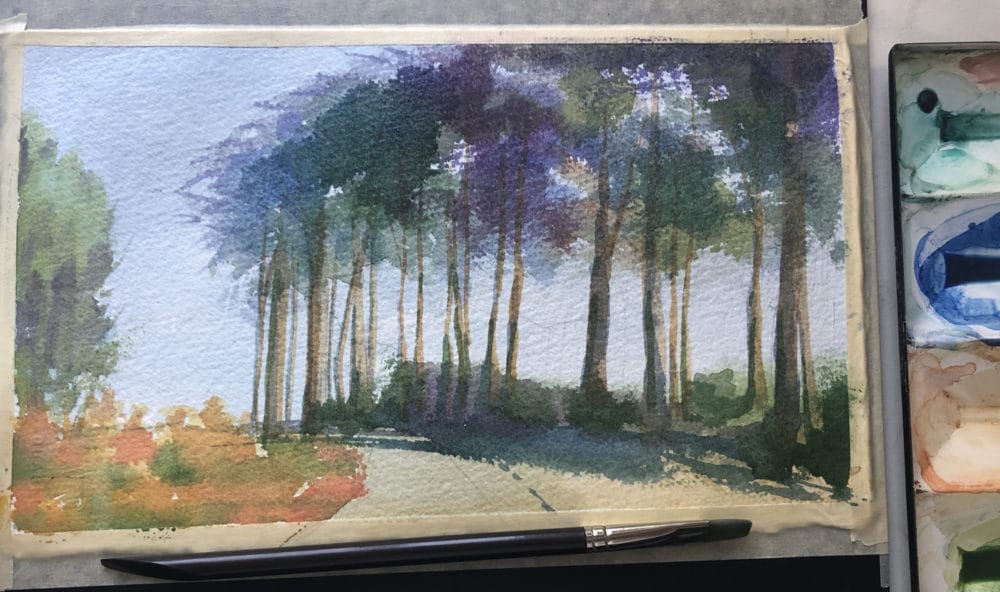
Learning Art Your Way
Everyone learns new things in different ways. I’m a visual learner, to my core. After watching a few introductory demos, I’m ready to try a new thing. Whether it’s baking a coconut cream pie, mounting an owl box, or having Charles Reid’s courage to alter real life details in a reference photo for the sake of a better painting – my confidence is always boosted after watching descriptive process.
That’s one of the best things about online courses for me; it’s visual, and I can stop a video clip, roll it back, and watch a technique over and over again till I understand what I’m seeing. Afterwards, I’m usually excited to try it. Are you a visual learner too?
Taking a course online also helps to frame structure around the fleeting whims of creative urges. Example: I wanted to learn more about perspective for landscape and architectural sketching, but the wish was buried under To-Do’s. I signed up for an online course on Perspective for Sketchers a few years ago, and it was a game changer.
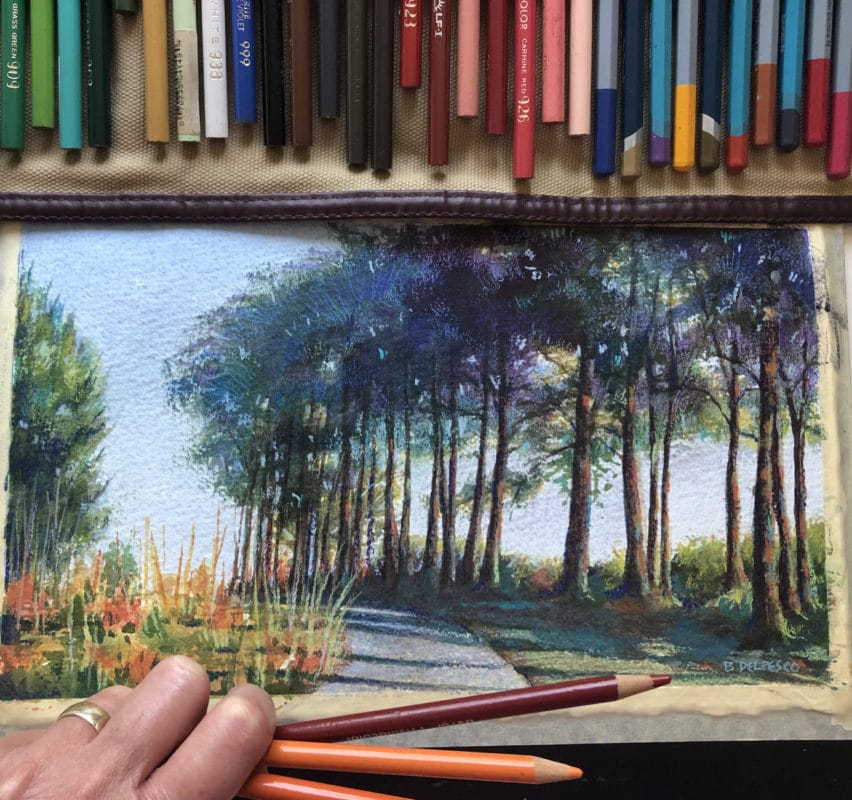
Match Material to Your Learning Style
Seven video episodes in the online course I took on Perspective gave me a framework. I could absorb material in small bites, and experiment with new concepts in a sketchpad before moving on to the next module.
For me, Stephanie Bowers’ video course checked the box on my list for learning about perspective in a fun, visually stimulating way. (She’s an excellent instructor – check out her blog!) I already had two books on perspective, but hadn’t finished reading either of them. It helps to know what will hold your attention when learning something new.
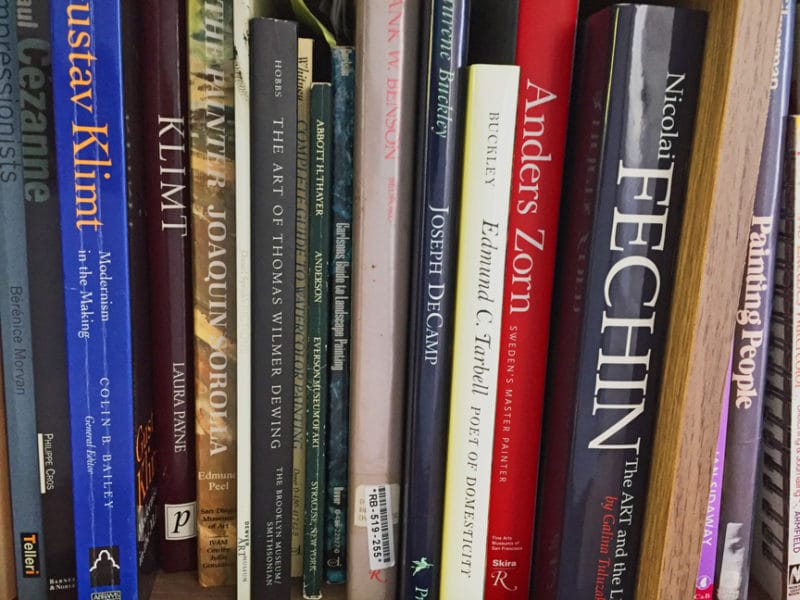
How Do You Learn Best?
So, how do you learn best? Do you need to read information in text form, or do you prefer to hear it in spoken word? Does your brain crave seeing new details as a visual demonstration? Understanding which pipeline is most effective for your own comprehension is really important. If you want to try colored pencil techniques, I hope you pursue creative growth in the most fitting format for YOU.
Thanks for stopping by today, and I’ll see you in the next post!
Belinda
P.S. The always adorable Bob Burridge posted this very informative 10 minute video on paint brush sizes and styles. If you’re new to selecting brushes for your art making, it’s worth a watch.
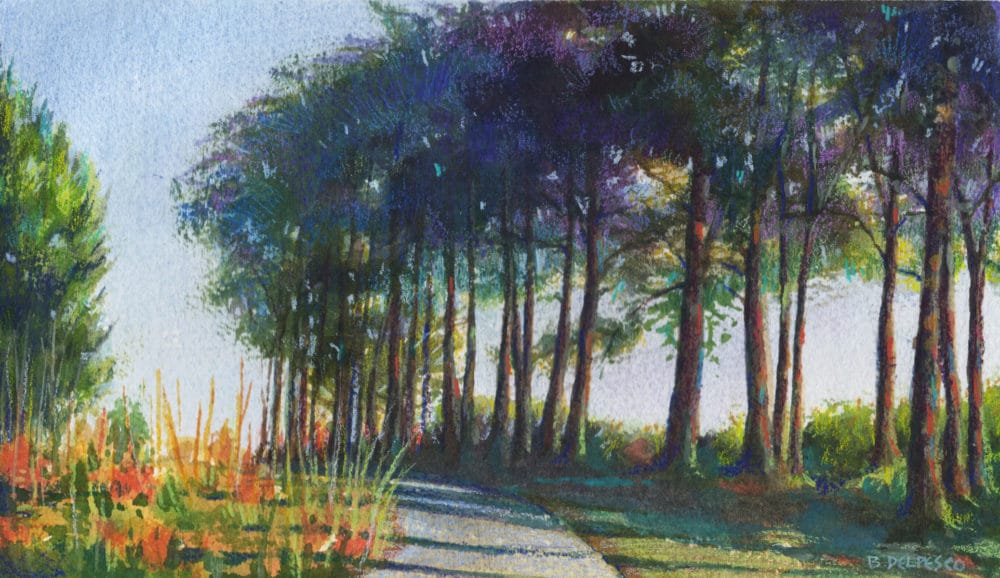
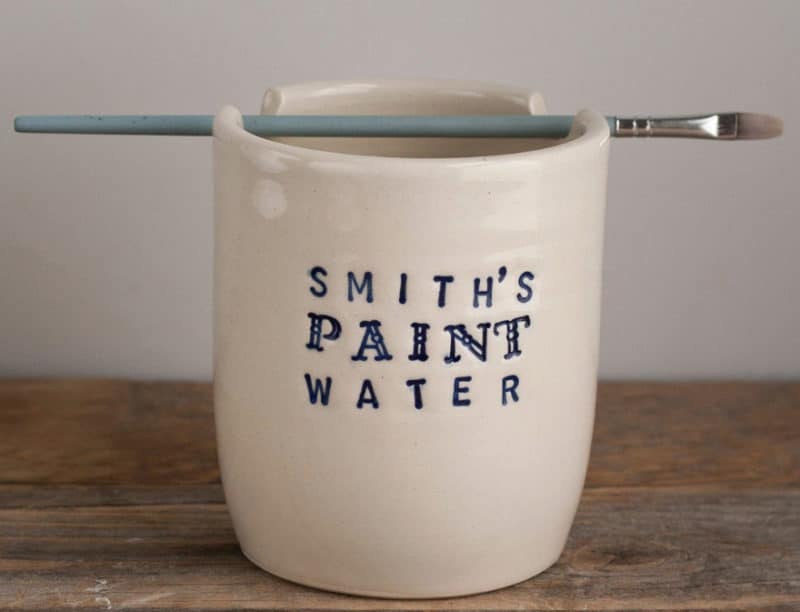

Art Quote
Real You is all you have, and all other paths are false. And in the best case, Real You is so happy to finally be recognized, it rewards you with Originality.
Mary Karr

Impresionante el video de Faber Castell, gracias por compartirlo!!!
Me alegra que hayas disfrutado el video. ¡Yo también lo hice! Gracias por la visita.
Your picture “Receiving line” is just beautiful. You always have such down to earth information to share and I leave your site inspired. I loved the Faber Castel video “How we make pencils”…wow! Respect the pencil and the people who make them! Thank you for the visual plate of cookies today:-)
Hi Nancy! I love that pencil video too! What PROCESS! Thanks for your kind feedback, and I’m so glad you’re enjoying the same details I’m enjoying too. Today’s cookies are oatmeal, pecan & cranberry. With a cup of tea. 🙂